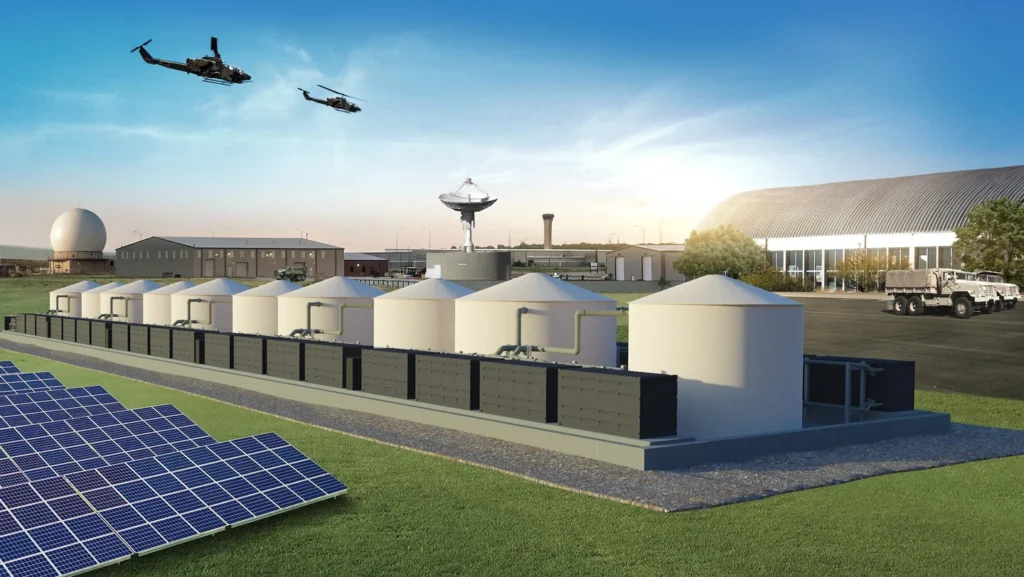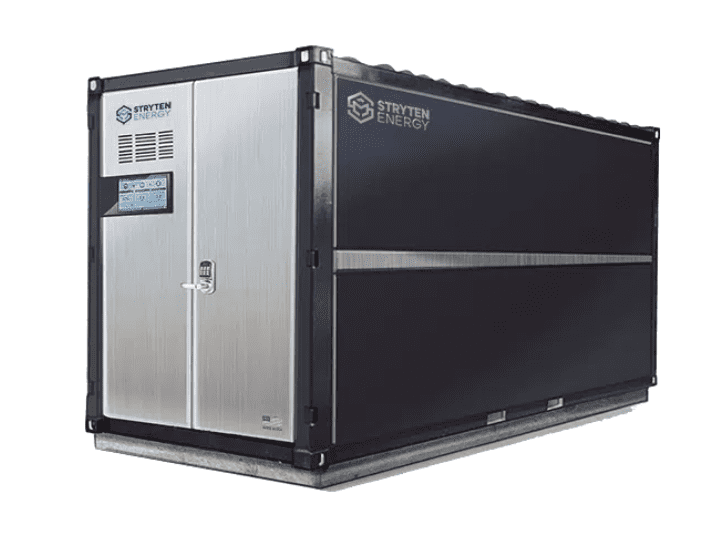The POWER Interview: Challenges, Opportunities for Energy Storage
The market for energy storage projects continues to grow as utilities recognize the benefits of storage for demand response, along with the integration of renewable energy resources to the power grid.
Incentives in the Inflation Reduction Act (IRA) for standalone storage provide even more support for the sector. Storage companies are growing, and more deals are being completed for projects serving utilities and commercial and industrial customers. Energy investors are driving many of these deals; Avantus (formerly known as 8minute) on Feb. 17 announced the sale of that group’s 200-MW/400-MWh Big Rock 1 energy storage project in California to Gore Street Energy Storage Fund, a fund managed by UK-based Gore Street Capital. It’s an example of how energy storage is driving change in the power markets.
Companies working in energy storage have a front-row seat to this evolution. Scott Childers is vice president for the Essential Power division of Stryten Energy, a Georgia-based group that invests in and develops energy storage technologies. The company, like many in the energy storage space, is seeing rapid innovation in the batteries and charging equipment used to power cars, trucks, warehouse forklifts and trains, as well as data centers and telecommunications networks. Stryten manufactures advanced lead, lithium, and vanadium batteries and intelligent chargers, and designs cloud-based software for smart fleet design decisions.
Childers, with a background in mechanical and electrical engineering, spent more than 15 years in the automotive industry with General Motors and Delphi Automotive. He also has worked with other groups, such as Hillphoenix, leading teams of scientists and engineers in developing systems for thermal and electrical energy management in areas such as refrigeration.

Childers provided POWER with insight into the current and future markets for energy storage, discussing challenges for the industry as well as areas where opportunities lie, including the commercial and industrial sector.
POWER: We’re three years into what some call “The Decade of Energy Storage.” Do you think growth in energy storage will continue, and if so, at what pace? If you think growth will slow, why?
Childers: We’re definitely going to see growth that’s faster than it has been in the past, and energy storage applications will continue to grow at a steady pace over the next decade. The Department of Energy’s investments in the industry, as well as the Infrastructure Investment and Jobs Act (IIJA) and the IRA incentives, will accelerate the industry, and we should start seeing more energy storage demonstration sites in a couple of years, particularly as demand for renewable energy takes off.
As the U.S. moves toward greater access to clean energy sources, and ultimately energy independence, generators will need a variety of long-duration battery technologies. Ultimately, this will help the country be ready for the expected tripling of power consumption by 2050—driven by electrification.
However, it will still take a while for the U.S. energy storage industry to build up the infrastructure it needs—the right manufacturing process and factories, the right talent, and the right technologies—to meet ever-growing demand for energy storage.
POWER: What are some energy storage projects you think are noteworthy?
Childers: The Lockheed Martin project at Fort Carson, Colorado (Figure 1), is a project that we are following. They are installing a redox flow battery designed for large-capacity storage applications. This system will test microgrid and renewable integration to ensure critical missions can continue in the event of a long-term power outage.

Stryten Energy has its own vanadium redox flow battery (VRFB) project to be installed at Snapping Shoals EMC (an electric power cooperative that serves areas near the Atlanta metro area). This installation will demonstrate our advanced VRFB technology for energy storage and deployment uses and evaluate where the technology will provide the maximum benefits. By testing the battery energy storage system against a variety of usage needs, we can identify where it can make the most impact for energy providers.
POWER: What are the current major challenges for the energy storage sector?
Childers: Labor shortages. The pool for technical and engineering talent is limited right now, and competition is fierce. Every energy storage company is looking to hire out of the same small group of people to help with their technological development.
Dependence on lithium, one of the most commercially mature battery chemistries, is also a challenge for a couple of reasons:
- First, most of the lithium supply chain comes from China, which creates long supply chains for many countries, supply chains that are vulnerable to both shipping delays and geopolitical tensions. Thankfully, the North American supply chain for other types of energy storage is and will be strong. There is already a robust, domestic circular economy for lead batteries. Additionally, the U.S. supply chain for vanadium redox flow batteries will likely be stable and growing in the coming years. The VRFB manufacturing process is similar to the lead battery manufacturing process in many ways, meaning not only does the U.S. already have the expertise to develop vanadium solutions, but it will also be able to reap the same circular economy benefits offered by lead.
- The second challenge with lithium is that of limited supply. More and more of the world’s lithium supply is being directed to electric vehicle batteries, leaving less for other energy storage projects. Focusing development on two or three of the most promising battery technologies will alleviate some of the uncertainty surrounding limited supply.
The length of time it takes to connect energy storage projects to grids is another challenge. Right now, it could take a project several years before it receives all the necessary approvals to connect with the grid. This creates uncertainty and risk for investors and organizations trying to deploy the projects.
Finally, power generators may be unsure of the types of services energy storage can provide beyond energy peak saving. Ancillary services, reliability services, frequency response, reserve service, black start service—battery manufacturers must be ready to teach power generators about the various types of services available, and to be clear whether their technology can provide storage services that pair well with solar and wind energy. Batteries paired with these renewable energy types need to be able to operate for at least eight hours.
POWER: Are there new storage technologies being developed that will support the industry?
Childers: Vanadium redox flow batteries are a relatively new type of long-duration energy storage technology (Figure 2) that pairs particularly well with renewable energy generation. The long run times of VRFB helps users harness otherwise intermittent and unpredictable wind and solar energy, and then transfer more renewable energy into grids during peak demand. And unlike older technologies, VRFB can undergo an infinite number of charge/discharge cycles and have decades-long lifespans, instead of only years-long. VRFB will be around for the long haul as renewable energy generation really takes off in the U.S. over the next 30 years and beyond.

Utility companies are already investing and testing the technology, including Snapping Shoals EMC, a Georgia co-op that has partnered with Stryten Energy to simulate different use cases for VRFB technology in energy storage.
POWER: How important is the siting of energy storage projects? Should they be installed at substations, and/or at various points along the power grid?
Childers: It depends on the application. For a hybrid project like solar-plus-storage, you want to be relatively close to the generation site. For a resiliency project, you would want to be close to the building or neighborhood you need to power during a power outage. This may pose an issue for more urban settings where space is limited, but there are ways to strategically place energy storage close by. For example, in Milwaukee, I know that batteries have been placed by simply lifting transformers off the ground, putting a concrete box under it and sliding the battery right underneath the transformer.
For front-of-meter applications like load balancing and frequency matching, the sensitivity to location decreases rapidly. In these cases, I believe the location will often be driven out of convenience and cost, preferencing currently owned and unused property and selecting sites that are near maintenance center and operations staff.
POWER: Will there be rapid growth in energy storage for residential, and for commercial & industrial sites?
Childers: There will certainly be rapid growth for commercial & industrial sites. Recent power outages have cost businesses millions of dollars, especially in places like California. To protect their bottom lines, businesses are going to be motivated to at least adopt resiliency services using energy storage. This is especially important for businesses that need energy 24/7, like data centers.
The Department of Defense is also a proponent of energy resiliency and energy independence, with the goal of making facilities and installations self-reliant for weeks or even a month. They will need on-site power generation and energy storage to make that happen.
Businesses will likely also be interested in energy storage to both gain better control of their power bills and support their business’s ESG (environmental, social, governance) initiatives, especially as it pertains to using more clean energy for their operations and reducing their carbon footprints.
As EVs continue to gain popularity, more commercial fleets are going to be electrified. This will push infrastructure needs upstream to new stationary long duration batteries, new transmission infrastructure, and even new or improved substations. Placing large, high energy stationary batteries immediately next to the fleet of smaller mobile units can solve many issues that will arise. First, it will rapidly deliver large amounts of energy, thus allowing for fast charging. Because this energy was slowly stored in the stationary battery overnight, it eliminates the need for upgrading the transmission and substation assets.
On the residential side, energy storage solutions are still too pricey for most individual homeowners except for the wealthy to install.
POWER: Will utilities drive growth in energy storage, or will more growth come from private (or governmental) investment in storage projects?
Childers: All of the above. Drivers of energy storage growth will be pretty evenly split between utilities, private investment and government investment, and sometimes a combination. For example, we’re seeing already that the government is stepping in and providing private companies interested in energy storage with incentives through the IRA and IIJA to deploy those solutions.
Utilities are cost-conscious and tend to prefer the most cost-effective technology solutions so that they do not have to pass along high costs to their consumers. That means that, while they are certainly asking questions about energy storage, they are not always on the bleeding edge of new technologies or completely aware of what energy storage can do for them. The onus will be on the private sector to introduce utilities to energy storage solutions that are reasonably priced, fit their specific needs, and can marry well with their existing infrastructure.
—Darrell Proctor is a senior associate editor for POWER (@POWERmagazine).